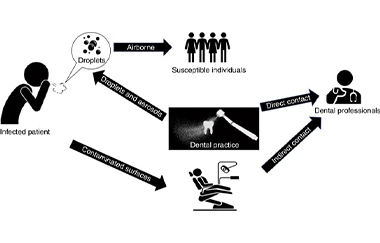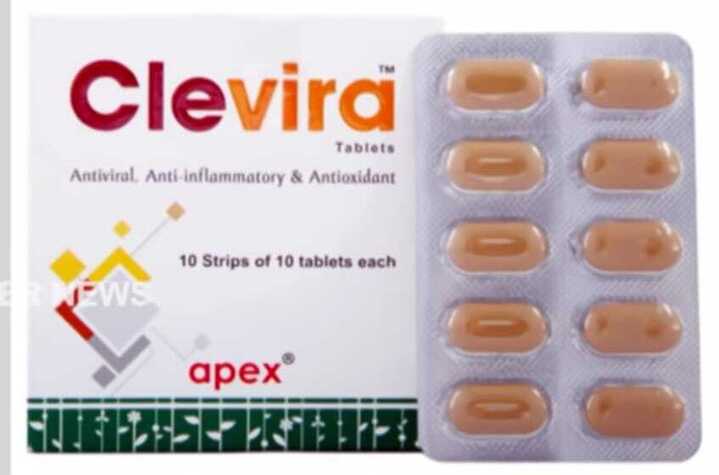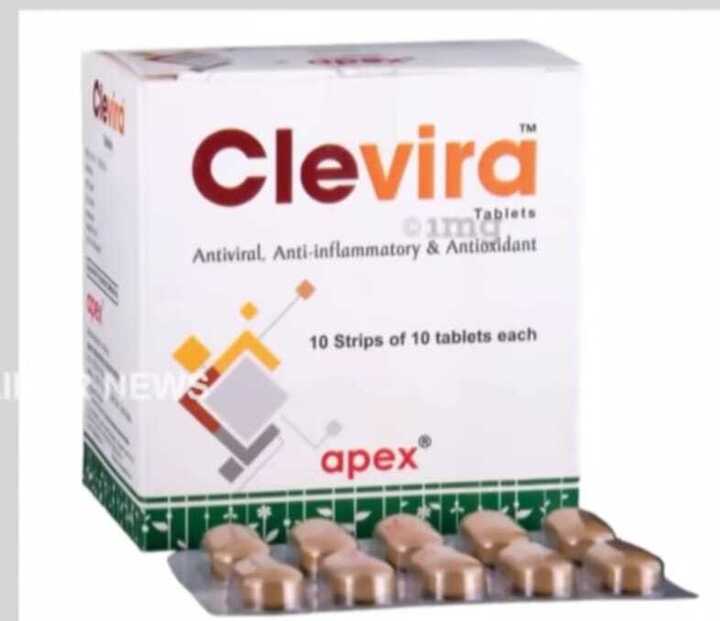COVID-19
Coronavirus disease (COVID-19) is an infectious disease caused by a newly discovered coronavirus.
Most people infected with the COVID-19 virus will experience mild to moderate respiratory illness and recover without requiring special treatment. Older people, and those with underlying medical problems like cardiovascular disease, diabetes, chronic respiratory disease, and cancer are more likely to develop serious illness.
The best way to prevent and slow down transmission is to be well informed about the COVID-19 virus, the disease it causes and how it spreads. Protect yourself and others from infection by washing your hands or using an alcohol based rub frequently and not touching your face.
The COVID-19 virus spreads primarily through droplets of saliva or discharge from the nose when an infected person coughs or sneezes, so it’s important that you also practice respiratory etiquette (for example, by coughing into a flexed elbow).
Symptoms
COVID-19 affects different people in different ways. Most infected people will develop mild to moderate illness and recover without hospitalization.
Most common symptoms:- fever.
- dry cough.
- tiredness.
- aches and pains.
- sore throat.
- diarrhoea.
- conjunctivitis.
- headache.
- loss of taste or smell.
- a rash on skin, or discolouration of fingers or toes.
Prevention:

1.To prevent infection and to slow transmission of COVID-19, do the following:
2.Wash your hands regularly with soap and water, or clean them with alcohol-based hand rub.
3.Maintain at least 1 metre distance between you and people coughing or sneezing.
4.Avoid touching your face.
5.Cover your mouth and nose when coughing or sneezing.
6.Stay home if you feel unwell.
7.Refrain from smoking and other activities that weaken the lungs.
8.Practice physical distancing by avoiding unnecessary travel and staying away from large groups of people.
Coronavirus disease 2019 (COVID-19) is a contagious disease caused by severe acute respiratory syndrome coronavirus 2 (SARS-CoV-2). The first case was identified in Wuhan, China, in December 2019. The disease has since spread worldwide, leading to an ongoing pandemic. Symptoms of COVID-19 are variable, but often include fever, cough, fatigue, breathing difficulties, and loss of smell and taste. Symptoms begin one to fourteen days after exposure to the virus. Of those people who develop noticeable symptoms, most (81%) develop mild to moderate symptoms (up to mild pneumonia), while 14% develop severe symptoms (dyspnea, hypoxia, or more than 50% lung involvement on imaging), and 5% suffer critical symptoms (respiratory failure, shock, or multiorgan dysfunction). Older people are more likely to have severe symptoms. At least a third of the people who are infected with the virus remain asymptomatic and do not develop noticeable symptoms at any point in time, but they still can spread the disease. Around 20% of those people will remain asymptomatic throughout infection, and the rest will develop symptoms later on, becoming pre-symptomatic rather than asymptomatic and therefore having a higher risk of transmitting the virus to others. Some people continue to experience a range of effects—known as long COVID—for months after recovery, and damage to organs has been observed. Multi-year studies are underway to further investigate the long-term effects of the disease.
The virus that causes COVID-19 spreads mainly when an infected person is in close contact another person. Small droplets and aerosols containing the virus can spread from an infected person's nose and mouth as they breathe, cough, sneeze, sing, or speak. Other people are infected if the virus gets into their mouth, nose or eyes. The virus may also spread via contaminated surfaces, although this is not thought to be the main route of transmission. The exact route of transmission is rarely proven conclusively, but infection mainly happens when people are near each other for long enough. People who are infected can transmit the virus to another person up to two days before they themselves show symptoms, as can people who do not experience symptoms. People remain infectious for up to ten days after the onset of symptoms in moderate cases and up to 20 days in severe cases. Several testing methods have been developed to diagnose the disease. The standard diagnostic method is by detection of the virus' nucleic acid by real-time reverse transcription polymerase chain reaction (rRT-PCR), transcription-mediated amplification (TMA), or by reverse transcription loop-mediated isothermal amplification (RT-LAMP) from a nasopharyngeal swab.
Preventive measures include physical or social distancing, quarantining, ventilation of indoor spaces, covering coughs and sneezes, hand washing, and keeping unwashed hands away from the face. The use of face masks or coverings has been recommended in public settings to minimise the risk of transmissions. Several vaccines have been developed and several countries have initiated mass vaccination campaigns. Although work is underway to develop drugs that inhibit the virus, the primary treatment is currently symptomatic. Management involves the treatment of symptoms, supportive care, isolation, and experimental measures.
Signs and symptoms

Symptoms of COVID-19 are variable, ranging from mild symptoms to severe illness. Common symptoms include headache, loss of smell and taste, nasal congestion and rhinorrhea, cough, muscle pain, sore throat, fever, diarrhea, and breathing difficulties. People with the same infection may have different symptoms, and their symptoms may change over time. Three common clusters of symptoms have been identified: one respiratory symptom cluster with cough, sputum, shortness of breath, and fever; a musculoskeletal symptom cluster with muscle and joint pain, headache, and fatigue; a cluster of digestive symptoms with abdominal pain, vomiting, and diarrhea. In people without prior ear, nose, and throat disorders, loss of taste combined with loss of smell is associated with COVID-19.
Most people (81%) develop mild to moderate symptoms (up to mild pneumonia), while 14% develop severe symptoms (dyspnea, hypoxia, or more than 50% lung involvement on imaging) and 5% of patients suffer critical symptoms (respiratory failure, shock, or multiorgan dysfunction). At least a third of the people who are infected with the virus do not develop noticeable symptoms at any point in time. These asymptomatic carriers tend not to get tested and can spread the disease. Other infected people will develop symptoms later, called "pre-symptomatic", or have very mild symptoms and can also spread the virus.
As is common with infections, there is a delay between the moment a person first becomes infected and the appearance of the first symptoms. The median delay for COVID-19 is four to five days. Most symptomatic people experience symptoms within two to seven days after exposure, and almost all will experience at least one symptom within 12 days.
Most people recover from the acute phase of the disease. However, some people continue to experience a range of effects for months after recovery—named long COVID—and damage to organs has been observed. Multi-year studies are underway to further investigate the long-term effects of the disease.
Transmission of disease

Coronavirus disease 2019 (COVID-19) spreads from person to person mainly through the respiratory route after an infected person coughs, sneezes, sings, talks or breathes. A new infection occurs when virus-containing particles exhaled by an infected person, either respiratory droplets or aerosols, get into the mouth, nose, or eyes of other people who are in close contact with the infected person. During human-to-human transmission, an average 1000 infectious SARS-CoV-2 virions are thought to initiate a new infection. The closer people interact, and the longer they interact, the more likely they are to transmit COVID-19. Closer distances can involve larger droplets (which fall to the ground) and aerosols, whereas longer distances only involve aerosols. Larger droplets can also turn into aerosols (known as droplet nuclei) through evaporation. The relative importance of the larger droplets and the aerosols is not clear as of November 2020; however, the virus is not known to spread between rooms over long distances such as through air ducts. Airborne transmission is able to particularly occur indoors, in high risk locations such as restaurants, choirs, gyms, nightclubs, offices, and religious venues, often when they are crowded or less ventilated. It also occurs in healthcare settings, often when aerosol-generating medical procedures are performed on COVID-19 patients. Although it is considered possible there is no direct evidence of the virus being transmitted by skin to skin contact. A person could get COVID-19 indirectly by touching a contaminated surface or object before touching their own mouth, nose, or eyes, though this is not thought to be the main way the virus spreads. The virus is not known to spread through feces, urine, breast milk, food, wastewater, drinking water, or via animal disease vectors (although some animals can contract the virus from humans). It very rarely transmits from mother to baby during pregnancy. Social distancing and the wearing of cloth face masks, surgical masks, respirators, or other face coverings are controls for droplet transmission. Transmission may be decreased indoors with well maintained heating and ventilation systems to maintain good air circulation and increase the use of outdoor air. The number of people generally infected by one infected person varies. Coronavirus disease 2019 is more infectious than influenza, but less so than measles. It often spreads in clusters, where infections can be traced back to an index case or geographical location. There is a major role of "super-spreading events", where many people are infected by one person. A person who is infected can transmit the virus to others up to two days before they themselves show symptoms, and even if symptoms never appear. People remain infectious in moderate cases for 7–12 days, and up to two weeks in severe cases. In October 2020, medical scientists reported evidence of reinfection in one person
Viral and host factors

The association between SARS-CoV-2 and the Renin-Angiotensin-Aldosterone System (RAAS) Multiple viral and host factors affect the pathogenesis of the virus. The S-protein, otherwise known as the spike protein, is the viral component that attaches to the host receptor via the ACE2 receptors. It includes two subunits: S1 and S2. S1 determines the virus host range and cellular tropism via the receptor binding domain. S2 mediates the membrane fusion of the virus to its potential cell host via the H1 and HR2, which are heptad repeat regions. Studies have shown that S1 domain induced IgG and IgA antibody levels at a much higher capacity. It is the focus spike proteins expression that are involved in many effective COVID-19 vaccines. The M protein is the viral protein responsible for the transmembrane transport of nutrients. It is the cause of the bud release and the formation of the viral envelope. The N and E protein are accessory proteins that interfere with the host's immune response.
Vaccine

A COVID‑19 vaccine is a vaccine intended to provide acquired immunity against severe acute respiratory syndrome coronavirus 2 (SARS‑CoV‑2), the virus causing coronavirus disease 2019 (COVID‑19). Prior to the COVID‑19 pandemic, there was an established body of knowledge about the structure and function of coronaviruses causing diseases like severe acute respiratory syndrome (SARS) and Middle East respiratory syndrome (MERS), which enabled accelerated development of various vaccine technologies during early 2020. On 10 January 2020, the SARS-CoV-2 genetic sequence data was shared through GISAID, and by 19 March, the global pharmaceutical industry announced a major commitment to address COVID-19.
In Phase III trials, several COVID‑19 vaccines have demonstrated efficacy as high as 95% in preventing symptomatic COVID‑19 infections. As of March 2021, 12 vaccines were authorized by at least one national regulatory authority for public use: two RNA vaccines (the Pfizer–BioNTech vaccine and the Moderna vaccine), four conventional inactivated vaccines (BBIBP-CorV, CoronaVac, Covaxin, and CoviVac), four viral vector vaccines (Sputnik V, the Oxford–AstraZeneca vaccine, Convidicea, and the Johnson & Johnson vaccine), and two protein subunit vaccines (EpiVacCorona and RBD-Dimer). In total, as of March 2021, 308 vaccine candidates were in various stages of development, with 73 in clinical research, including 24 in Phase I trials, 33 in Phase I–II trials, and 16 in Phase III development.
Many countries have implemented phased distribution plans that prioritize those at highest risk of complications, such as the elderly, and those at high risk of exposure and transmission, such as healthcare workers. As of 18 March 2021, 409.76 million doses of COVID‑19 vaccine have been administered worldwide based on official reports from national health agencies. AstraZeneca-Oxford anticipates producing 3 billion doses in 2021, Pfizer-BioNTech 1.3 billion doses, and Sputnik V, Sinopharm, Sinovac, and Johnson & Johnson 1 billion doses each. Moderna targets producing 600 million doses and Convidicea 500 million doses in 2021. By December 2020, more than 10 billion vaccine doses had been preordered by countries, with about half of the doses purchased by high-income countries comprising 14% of the world's population.
COVID-19 second wave brings new symptoms

The country is struggling with the second wave of corona which is getting worse day by day. The problems with the second wave are piling up as the symptoms of COVID-19 infections are strange and not common to the previous one. Sore throat is one of the most common symptoms.
Sore throat: If you have a prickly, itchy throat or if you feel some swelling, it can be indicators of a sore throat, which is one of the most common symptoms of COVID-19 infection. This symptom has been seen in over 52% of cases globally
Know the symptoms
To deal with the infection, things will start from the symptoms. How to know if you have COVID-19? By noticing the major symptoms of the virus. Fever, body temperature exceeding 37 ° C, persistent cough, no smell, no taste in food, shortness of breath, tiredness, headache, body ache and sore throat are some of the symptoms of the virus. If you have any of these symptoms, immediately go into self-isolation. After this, you should get tested for COVID-19 to get a confirmation.
How to be in self isolation?
It is better to self-isolate when symptoms of coronavirus are visible. Stay at home and do not leave the house unless there is a medical emergency. Even if you come in contact with someone who is infected with the virus, go into self isolation for at least 14 days. Stay in a separate room away from household members.
Keep these things in mind during self isolation
To be self-isolated, choose a room where ventilation is good. Do not come in contact with people while taking food and medicine from them. Separate your utensils, towels and bedding, do not share them with anyone. Wear masks at home also. Wash hands, nose, and mouth with soap every once in a while.
video1
video2
video3
video4
video5
Photos



For More Details Visit
https://stopcorona.tn.gov.in/
https://indianhelpline.com/TAMILNADU/
